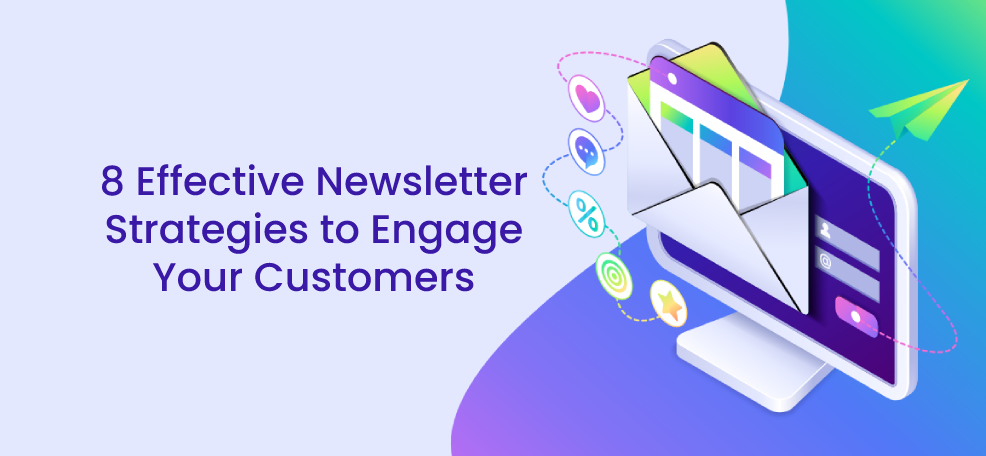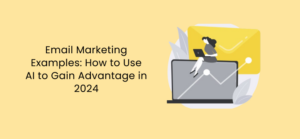Newsletters are a great way to educate customers on your business and industry. While newsletters aren’t always directly about selling, educated leads are more confident about buying and have more reason to trust your brand.
They can’t make this impact if you can’t keep your audience engaged with your emails, however.
These eight strategies will keep your subscribers reading every email:
1. Welcome New Subscribers
Just like any other form of communication, first impressions matter. A great welcome message can be one of the most powerful automated emails you can send. This should include the basic information they need to know, such as reminding subscribers of when or how often your newsletter goes out and the topics it will cover.
Your opening message should also let subscribers know how to opt-out and how to set preferences such as choosing how often they want to receive messages or to only receive messages about specific topics. Getting their preferences upfront ensures that subscribers never receive irrelevant content that doesn’t interest them.
Your welcome campaign can also include a preview of what to expect from your newsletter. This could be samples of recent newsletters covering relevant topics or newsletter-exclusive evergreen content such as a guide or introduction to a subject.
2. Segment Audiences
Unless you only offer one service to a very specific demographic, not all your newsletter subscribers are interested in the same topics. To keep each person engaged with every message you send, effectively segmented mailing lists are critical.
Sometimes it is obvious how to segment your mailing lists. For example, a clothing store newsletter sending out an email about children’s clothing would be wasting the time of any subscribers who are not parents. Similarly, the opt-in method used and behavioral data such as browsing and purchase history are often good indicators of a subscriber’s interests.
You can segment your audience using your email marketing tools according to pretty much any quantifiable data you have, and many segments will be specific to your business. However, some factors can be useful ways to segment most audiences:
- Content and offers intended to get subscribers thinking about expensive premium services won’t get many responses from customers on a budget. Similarly, people who only want the best may be less interested in content and services focused on reducing costs. This includes separating free or trial users from paid service users.
- While all your emails should look great in a mobile format, it helps to know which customers usually open your newsletter from their phone. This lets you adapt content to the mobile format, for example, by turning an article into an infographic.
- For newsletters reaching a professional audience, it is important to segment according to subscribers’ job titles. To put it simply, your content should reflect whether you are contacting someone who will use your services themselves or someone who will provide your services to their teams.
3. Use SMS

Texting can support your newsletter in several ways:
- SMS notifications can boost your email open rates by reminding subscribers when you send out your newsletter. While a subscriber may only check emails a few times a day, most people have their phone on them at all times, ensuring customers never miss an email.
- Creating a text-to-subscribe virtual number can provide a convenient additional opt-in method. This is particularly useful for generating newsletter opt-ins from physical media such as signs, flyers, and direct mail. It only takes a few seconds to get their phone out and text a keyword. Streamlining the subscription process is an important step to maximize the impact of any email marketing.
- You can also supplement your emails with an SMS newsletter. This lets you provide shorter content to keep subscribers engaged between email releases, such as breaking news or flash sale alerts, or providing a daily quick tip.
4. Boost Interactivity
Creating opportunities to interact with or participate in your newsletter content gives subscribers another reason to engage with your emails. Using surveys and polls to get your audience’s opinions on the latest news and trends tells you more about what your audience is interested in.
Interactivity is also a great way to get your subscribers thinking about a specific topic. For example, you could pose a question related to your industry and include the most interesting responses in your next email.
Besides getting customers to think about their own answer to your question, even those who don’t participate will be exposed to fresh perspectives from other customers.

Similarly, prompting your audiences for questions that you will answer in the next newsletter gives subscribers the opportunity to direct content towards topics they are interested in. The questions and answers you get from doing this can be a useful source of future content ideas too, as it highlights what your customers want to know more about.
5. Get The Timing Right
Timing has a huge impact on the success of your newsletter. The right schedule depends on your business and customers, but there are a few basic rules that apply to most audiences:
- People usually spend their weekends relaxing or having fun, not reading their emails.
- Mondays are also to be avoided, as your recipients likely have a backlog of unread emails to get through from the weekend already.
- According to recent research by Mailgun, emails sent at 3 pm on a Wednesday are most likely to be opened.

While these rules can provide a starting point for your newsletter schedule, every audience has different preferences. As a result, it is important to try out different schedules and timings and regularly analyze the results to find out what works best for your subscribers.
A simple way to find the timing that works for your customers is to just ask them. A quick multiple-choice survey to select their preferred day, time, and frequency of emails only takes a few seconds to complete.
6. Resend Unread Emails
The average person receives around 121 emails a day.
One consequence of this is that it won’t take long for another message to push your email off the first page of a recipient’s inbox. When this happens, your subscriber no longer sees your newsletter as soon as they open their emails and could forget to read it or never know you sent it in the first place.
Resending unread emails can tackle this problem and boost your overall open rates. Don’t overdo it however, spamming your subscribers with the same newsletter may prompt a negative response or trigger a spam filter. Resending once a day or two later will be enough to boost open rates without annoying your subscribers.
7. Gamify Engagement
Gamification can be an effective way to give subscribers more reasons to engage with your newsletter.
At the most basic level, gamification adds an intrinsically fun or satisfying experience to open your email. This could be as simple as adding virtual scratch card effects to revealing discounts or asking subscribers a quick trivia question to reveal a code or link.

Embedding fun interactive elements and simple games into an email is a great way to boost engagement, but these features take time and money to implement. It is a good idea to focus on ideas that can be reused or serve as templates for interactive content in future newsletters.
8. Focus On Content
Discounts, offers, and loyalty rewards are a great incentive to drive more opt-ins, but valuable content decides whether your audience keeps reading in the long term. Content value comes from the entertainment, or useful information subscribers get from your newsletter.
Like mailing list segmentation and newsletter scheduling, this is highly dependent on your specific audience. Categorizing each newsletter you send by the type of content it contains, and the topics it covers will help you track and analyze which content ideas get results.
Without worthwhile content to read, recipients are unlikely to do more than skim your message for an offer that interests them. While this still results in some sales, it limits your ability to engage and educate subscribers on your industry. Consequently, you will be less able to help them by introducing new ideas and solutions they could benefit from.
Great Newsletters Provide Value
The value keeps subscribers engaged with your newsletter. This can come in the form of useful, relevant information, entertainment, and interactivity.
Providing all of these requires the use of a range of strategies. Every audience is different, however, so any strategy you use should be adapted to your subscribers and adjusted over time according to your results.




